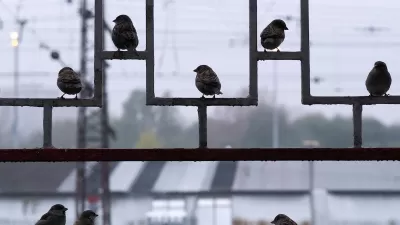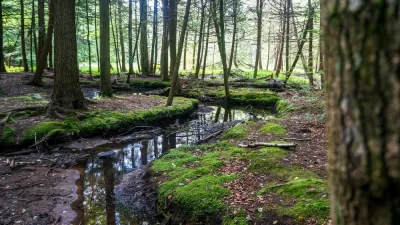Overly loud noise isn’t just a public health risk for humans.

A new study being conducted in the Bridger-Teton National Forest in Wyoming is finding that “the mere presence of human sound, no matter how loud or quiet, fast or slow, changes how animals behave.” Christine Peterson describes the new research in High Country News.
“For some species, hikers and bikers may be little more than a sideshow in a forest full of natural disturbances. For others, recreationists could have an impact similar to that of terrifying predators, invading habitat where food can be found, resulting in lower birthrates and even increasing deaths.”
While “non-consumptive recreation” such as hiking may seem harmless, “recent studies show otherwise. There’s one out of Vail, Colorado, showing that increased trail use by hikers and mountain bikers disturbed elk so much the cows birthed fewer calves. Another out of Grand Teton National Park showed that backcountry skiers scared bighorn sheep during winter when food was scarce, with potentially lethal consequences.”
The study is designed to assess what types of noises cause the biggest reactions in animals. “Judging by an initial analysis of last summer’s data, large groups of mountain bikers were the most likely to cause animals like mule deer and elk to flee.”
FULL STORY: When the Woods Get Noisy, the Animals Get Nervous

Alabama: Trump Terminates Settlements for Black Communities Harmed By Raw Sewage
Trump deemed the landmark civil rights agreement “illegal DEI and environmental justice policy.”

Planetizen Federal Action Tracker
A weekly monitor of how Trump’s orders and actions are impacting planners and planning in America.

Why Should We Subsidize Public Transportation?
Many public transit agencies face financial stress due to rising costs, declining fare revenue, and declining subsidies. Transit advocates must provide a strong business case for increasing public transit funding.

Judge Orders Release of Frozen IRA, IIJA Funding
The decision is a victory for environmental groups who charged that freezing funds for critical infrastructure and disaster response programs caused “real and irreparable harm” to communities.

‘Clybourne Park’ Sets Stage for Housing Equity Discussions
Clybourne Park, a play exploring race, real estate, and community tensions, can set the stage for discussion on the lasting impacts of housing discrimination, gentrification, and the fight for affordability.

Understanding Road Diets
An explainer from Momentum highlights the advantages of reducing vehicle lanes in favor of more bike, transit, and pedestrian infrastructure.
Urban Design for Planners 1: Software Tools
This six-course series explores essential urban design concepts using open source software and equips planners with the tools they need to participate fully in the urban design process.
Planning for Universal Design
Learn the tools for implementing Universal Design in planning regulations.
Caltrans
Smith Gee Studio
Institute for Housing and Urban Development Studies (IHS)
City of Grandview
Harvard GSD Executive Education
Toledo-Lucas County Plan Commissions
Salt Lake City
NYU Wagner Graduate School of Public Service





























